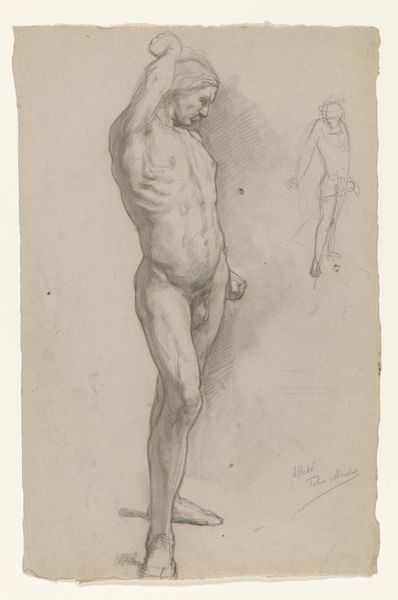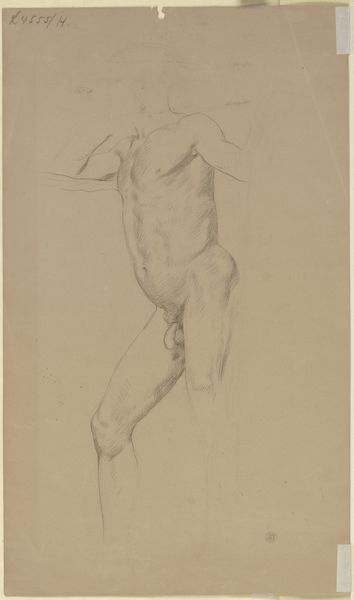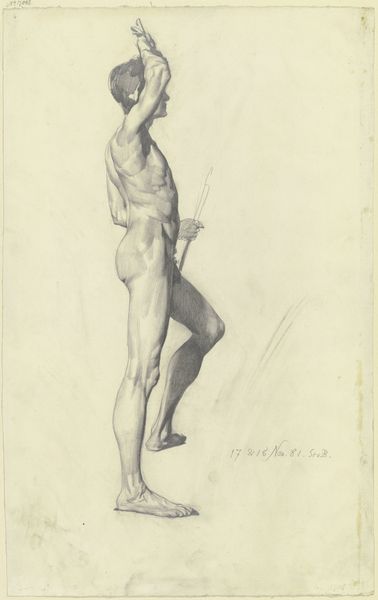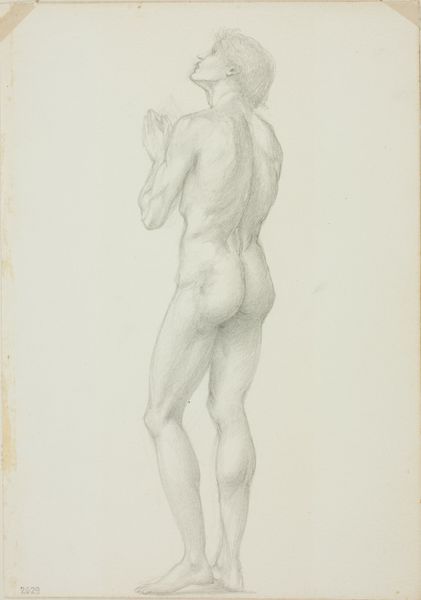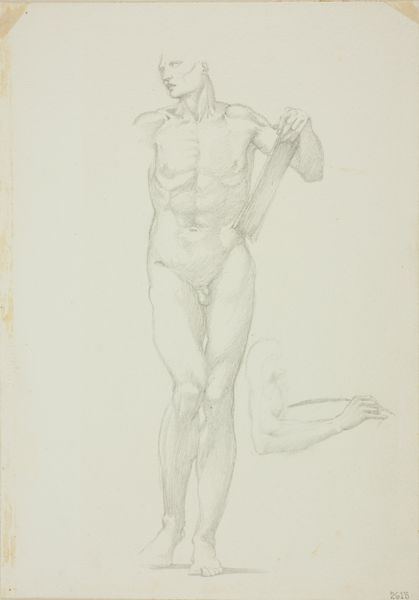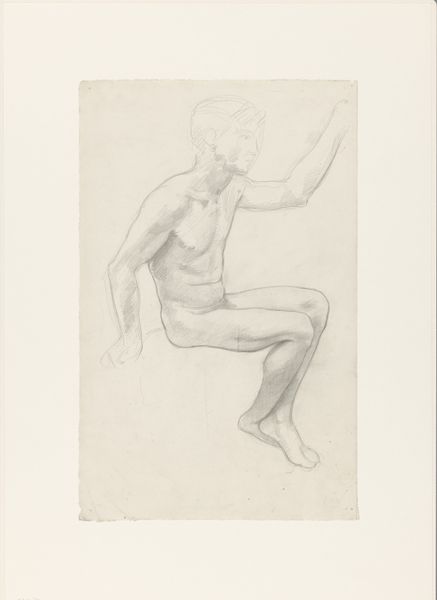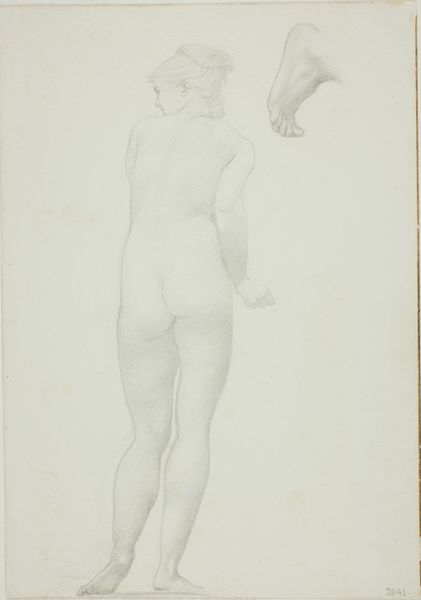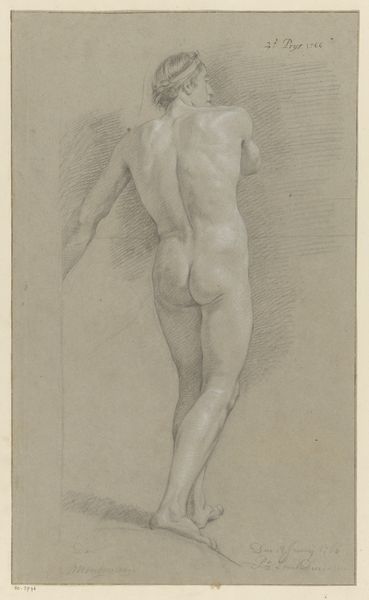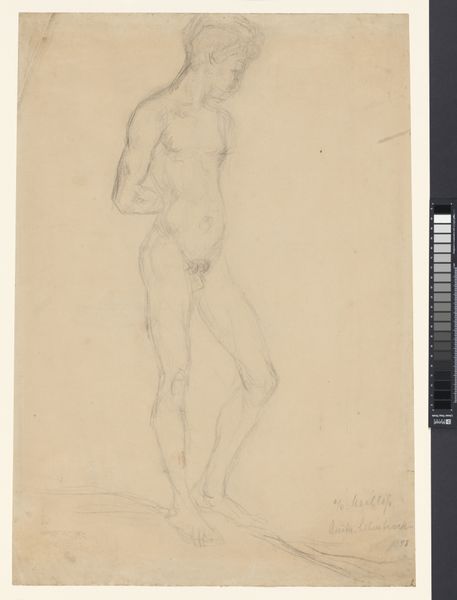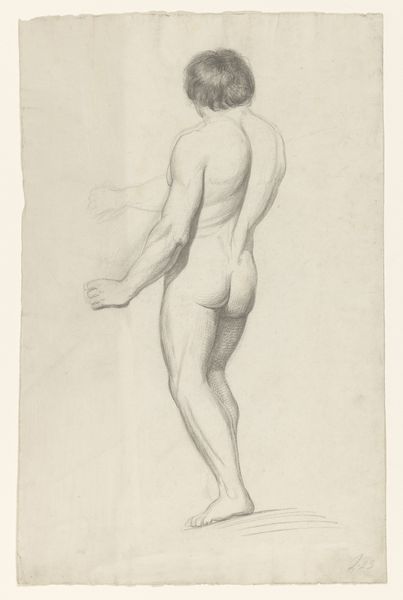
drawing, pencil, chalk, charcoal
#
portrait
#
drawing
#
charcoal drawing
#
figuration
#
pencil
#
chalk
#
charcoal
#
nude
Copyright: Public Domain
Curator: The first thing that strikes me is how delicate it seems, this "Knabenakt nach links, kauernder Kinderakt," or "Boy Nude Facing Left, Crouching Child Nude." A work in the Städel Museum drawn with charcoal, chalk, and pencil by Johann Heinrich Hasselhorst. Editor: There’s something quite poignant about it, isn’t there? A study in quiet contemplation. The figure on the right almost fades into the background, like a ghost of himself. What does it evoke for you? Curator: Melancholy, perhaps. Child studies like this were common as artists honed their craft and understanding of anatomy in the academy, but Hasselhorst also infuses vulnerability into the posture of both figures, and in the main boy’s gesture with an open, waiting hand. It makes you wonder what narratives these sketches might conceal. Editor: The starkness of the charcoal really enhances that feeling. It feels unfinished, raw, as if we’re glimpsing a moment of intense artistic scrutiny, and also, perhaps, something of the conditions of art making: that even what seems marginal, even the practice work of artists, comes to occupy the frame. Curator: Absolutely. The use of nudes in academic training often invites controversy and speaks to institutional power dynamics—but in Hasselhorst's work, the rawness and the fragility offer a stark counterpoint. These weren’t destined to be heroic bodies, glorified in the history books; they appear as experiments and opportunities to perceive something fundamentally human. Editor: That makes it powerful, I think. It resists the classical tradition by not striving for perfect forms but instead captures these fragile, intimate moments. It gives the boy a rare kind of presence. The art establishment often positions artists above their subjects, but there is a subtle dialogue at play here between artist and model. Curator: It reminds us that, despite all the shifts in art over time, the need to capture a fleeting gesture, a human likeness remains. Editor: Indeed. Perhaps the most radical act is looking closely, acknowledging the quiet hum of human existence, however ephemeral it might be.
Comments
No comments
Be the first to comment and join the conversation on the ultimate creative platform.

